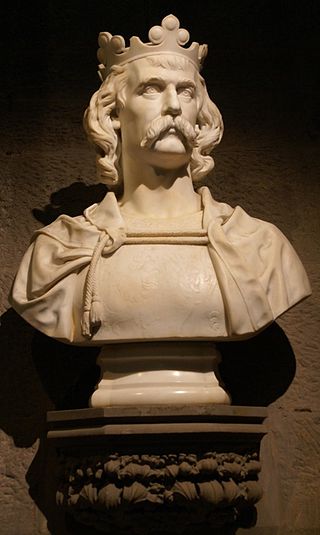
Robert I, popularly known as Robert the Bruce, was King of Scots from 1306 to his death in 1329. Robert led Scotland during the First War of Scottish Independence against England. He fought successfully during his reign to restore Scotland to an independent kingdom and is regarded in Scotland as a national hero.
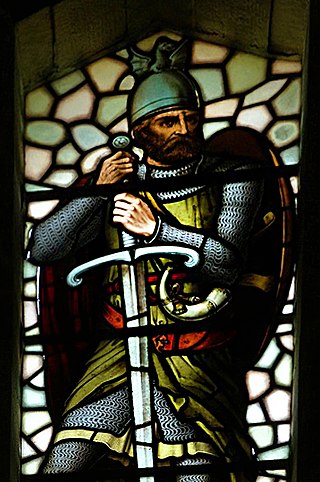
Sir William Wallace was a Scottish knight who became one of the main leaders during the First War of Scottish Independence.

The Wars of Scottish Independence were a series of military campaigns fought between the Kingdom of Scotland and the Kingdom of England in the late 13th and early 14th centuries.

The Battle of Stirling Bridge was fought during the First War of Scottish Independence. On 11 September 1297, the forces of Andrew Moray and William Wallace defeated the combined English forces of John de Warenne, 6th Earl of Surrey, and Hugh de Cressingham near Stirling, on the River Forth.

John Balliol or John de Balliol, known derisively as Toom Tabard, was King of Scots from 1292 to 1296. Little is known of his early life. After the death of Margaret, Maid of Norway, Scotland entered an interregnum during which several competitors for the Crown of Scotland put forward claims. Balliol was chosen from among them as the new King of Scotland by a group of selected noblemen headed by King Edward I of England.
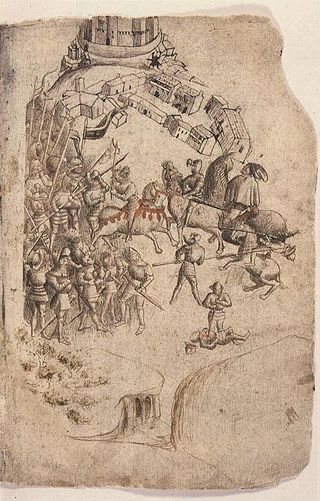
The Battle of Bannockburn was fought on 23–24 June 1314, between the army of Robert the Bruce, King of Scots, and the army of King Edward II of England, during the First War of Scottish Independence. It was a decisive victory for Robert Bruce and formed a major turning point in the war, which ended 14 years later with the de jure restoration of Scottish independence under the Treaty of Edinburgh–Northampton. For this reason, the Battle of Bannockburn is widely considered a landmark moment in Scottish history.

Isabella of Mar was the first wife of Robert Bruce VII, Earl of Carrick. Isabella died before her husband was crowned King of Scotland. She and her husband were the grandparents of Robert II, King of Scotland, founder of the Royal House of Stuart.
Andrew Moray, also known as Andrew de Moray, Andrew of Moray, or Andrew Murray, was an esquire, who became one of Scotland's war-leaders during the First Scottish War of Independence. Moray, son and heir to Sir Andrew Moray of Petty, initially raised a small band of supporters at Avoch Castle in early summer 1297 to fight King Edward I of England. He soon had successfully regained control of the north for the absent Scots king, John Balliol. Moray subsequently merged his army with that of William Wallace, and jointly led the combined army to victory at the Battle of Stirling Bridge on 11 September 1297. In the fighting at Stirling, Moray was severely wounded. He died at an unknown date and place that year.
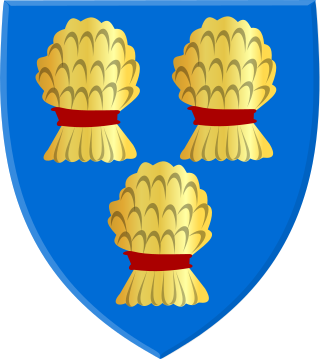
John Comyn III of Badenoch, nicknamed the Red, was a leading Scottish baron and magnate who played an important role in the First War of Scottish Independence. He served as Guardian of Scotland after the forced abdication of his uncle, King John Balliol, in 1296, and for a time commanded the defence of Scotland against English attacks. Comyn was stabbed to death by Robert the Bruce before the altar at the church of the Greyfriars at Dumfries, once it had been declared that Comyn had more connection to King David of Scotland and therefore should be the next King of Scotland, not Robert.
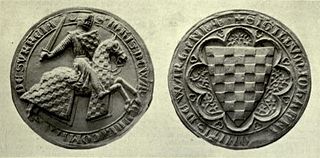
John de Warenne, 6th Earl of Surrey was a prominent English nobleman and military commander during the reigns of Henry III of England and Edward I of England. During the Second Barons' War he switched sides twice, ending up in support of the king, for whose capture he was present at Lewes in 1264. Warenne was later appointed a Guardian of Scotland and featured prominently in Edward I's wars in Scotland.
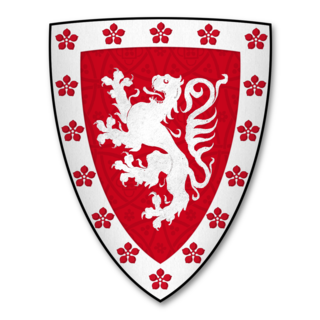
Patrick de Dunbar, 9th Earl of March, was a prominent Scottish magnate during the reigns of Robert the Bruce and David II.

Thomas Randolph, Earl of Moray was a soldier and diplomat in the Wars of Scottish Independence, who later served as regent of Scotland. He was a nephew of Robert the Bruce, who created him as the first earl of Moray. He was known for successfully capturing Edinburgh Castle from the English, and he was one of the signatories of the Declaration of Arbroath.

The First War of Scottish Independence was the first of a series of wars between English and Scottish forces. It lasted from the English invasion of Scotland in 1296 until the de jure restoration of Scottish independence with the Treaty of Edinburgh–Northampton in 1328. De facto independence was established in 1314 at the Battle of Bannockburn. The wars were caused by the attempts of the English kings to establish their authority over Scotland while Scots fought to keep English rule and authority out of Scotland.
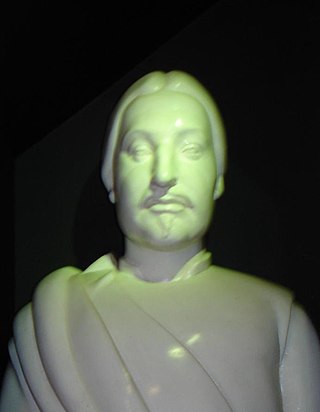
William II, Earl of Ross was ruler of the province of Ross in northern Scotland, and a prominent figure in the Wars of Scottish Independence.

Clan Dunbar is a Scottish clan of the Scottish Lowlands.

Sir William Douglas "le Hardi", Lord of Douglas was a Scottish nobleman and soldier.

Sir Alexander Seton, also known as Alexander de Seton was the Governor of Berwick.
The English invasion of Scotland of 1296 was a military campaign undertaken by Edward I of England in retaliation to the Scottish treaty with France and the renouncing of fealty of John, King of Scotland and Scottish raids into Northern England.
Events from the 1290s in the Kingdom of Scotland.


















